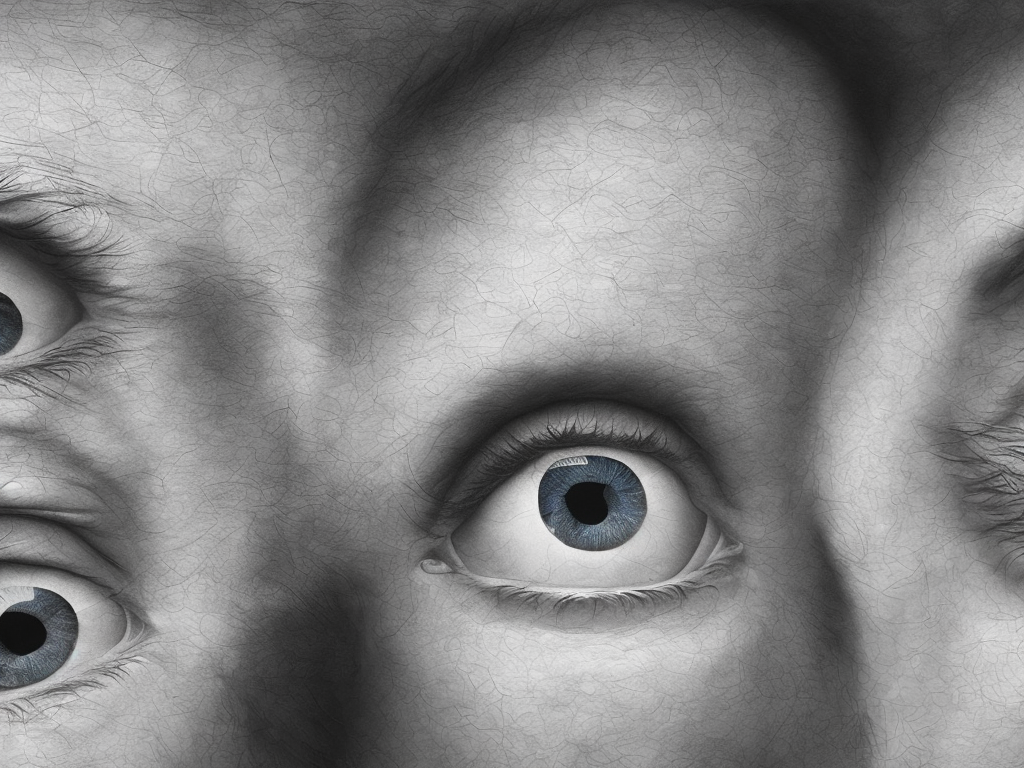
Introduction
The human eye is a highly complex organ that plays a vital role in vision. However, some individuals may experience vision problems such as myopia and hypermetropia. These two conditions are quite common and affect a significant proportion of the population. Myopia is characterised by a difficulty in seeing objects that are far away, while hypermetropia is characterised by a difficulty in seeing objects that are close up. In this essay, we will explore the differences between myopia and hypermetropia, their causes, symptoms, and treatments.
Myopia
Myopia, commonly referred to as nearsightedness, is a condition in which objects appear blurry or out of focus when viewed from a distance. This occurs because the eyeball is too long or the lens is too thick, causing light rays to focus in front of the retina instead of on it. As a result, people with myopia can see close objects clearly, but they struggle with objects at a distance.
Causes of Myopia
Myopia is generally believed to be caused by genetic factors. Studies have shown that children with parents who have myopia are at a higher risk of developing the condition themselves. Other factors that may contribute to the development of myopia include a lack of outdoor exposure, reading, and close work, which can cause the eye to elongate and become more myopic.
Symptoms of Myopia
The primary symptom of myopia is difficulty seeing objects at a distance. Patients may also experience headaches or eye strain, especially after prolonged reading, computer work or other activities that require focusing for prolonged periods. Myopia often develops during childhood, and it can progress during adolescence and early adulthood.
Treatment of Myopia
The most common treatment for myopia is corrective lenses, such as eyeglasses or contact lenses that help in refracting the light and redirecting it to fall properly on the retina. Another effective method of correcting myopia is laser eye surgery, such as LASIK. This procedure involves reshaping the cornea to improve its curvature and focus, thus correcting the refractive error. LASIK is a safe and effective procedure, but it is not recommended for everyone. Individuals with severe myopia, thin corneas or other eye conditions may not be eligible for LASIK. Additionally, in some cases, the individual's myopia may continue to progress after surgery, requiring additional treatment.
Hypermetropia
Hypermetropia, commonly referred to as farsightedness, is a condition in which objects appear blurry or out of focus when viewed up close. This occurs because the eyeball is too short, or the lens is too thin, causing light rays to focus behind the retina instead of on it. As a result, people with hypermetropia can see objects at a distance clearly, but they struggle with objects that are close up.
Causes of Hypermetropia
Hypermetropia is generally believed to be caused by genetic factors. Studies have shown that children with parents who have hypermetropia are at a higher risk of developing the condition themselves. Other factors that may contribute to the development of hypermetropia include ageing, which can cause the lens to lose its elasticity and make it harder to focus on nearby objects, and certain medical conditions, such as diabetes.
Symptoms of Hypermetropia
The primary symptom of hypermetropia is difficulty seeing near objects. Patients may also experience headaches or eye strain, especially after prolonged reading or other activities that require focusing for prolonged periods. Hypermetropia may develop during childhood or adulthood, and it can progress with age.
Treatment of Hypermetropia
The most common treatment of hypermetropia is corrective lenses, such as eyeglasses or contact lenses. Unlike myopia, for which the glasses are concave to help refract the incoming light, the glasses prescribed for hypermetropia are convex, which helps to change the bending of the incoming light, focusing it precisely on the retina and allowing clear vision. Surgery is another option, but it is not as common for hypermetropia as it is for myopia. Also, the surgery for hypermetropia is not as effective in changing the eye shape significantly to offer good correction. Hence, it is usually reserved for moderate or low hypermetropia cases that do not respond well to corrective lenses.
Differences between Myopia and Hypermetropia
Myopia and hypermetropia are two different refractive errors that result in different visual symptoms. The primary difference between the two lies in the location of the blurred vision. In myopia, patients have difficulty seeing objects at a distance, whereas in hypermetropia, patients have difficulty seeing objects that are close up. Another way to understand this difference is to consider a tennis ball on the floor. A person with myopia will focus too much on the details of the ball and may not be able to see it well at a distance, while a person with hypermetropia will see only the general shape of the ball but cannot focus on the details.
Conclusion
Myopia and hypermetropia are the two most common refractive disorders of the eye. They affect a significant portion of the population worldwide. While they are similar in some ways, their symptoms, causes, and treatments are different. Therefore, it is necessary to consult an ophthalmologist to assess the need, prescription and suitability of corrective measures such as eyeglasses, contact lenses or surgeries. By understanding these differences, we can better diagnose and treat patients, and ultimately improve their quality of life.
 Self-Instruct
Self-Instruct